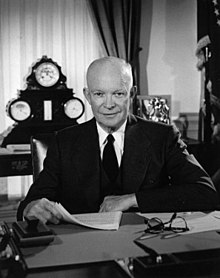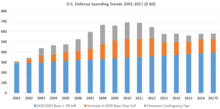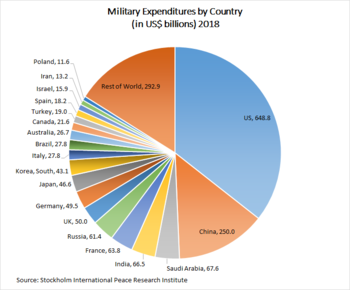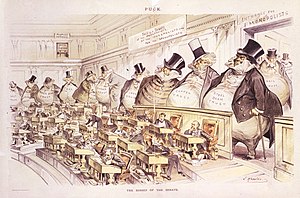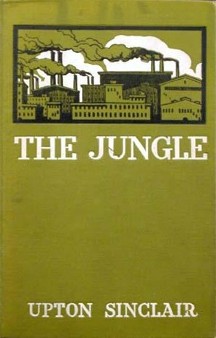From Wikipedia, the free encyclopedia
Progressivism in the United States is a
political philosophy and
reform movement that reached its height early in the 20th century. Middle class and
reformist in nature, it arose as a response to the vast changes brought by
modernization such as the growth of large corporations,
pollution and rampant
corruption in American politics.
Historian Alonzo Hamby describes American progressivism
as a "political movement that addresses ideas, impulses, and issues
stemming from modernization of American society. Emerging at the end of
the nineteenth century, it established much of the tone of American
politics throughout the first half of the century".
In the 21st century, progressives continue to embrace concepts such as environmentalism and social justice.
While the modern progressive movement may be characterized as largely
secular in nature, by comparison, the historical progressive movement
was to a significant extent rooted in and energized by religion.
Progressive Era
Historians debate the exact contours, but they generally date the Progressive Era in response to the excesses of the Gilded Age from the 1890s to either World War I or the onset of the Great Depression.
Many of the core principles of the progressive movement focused on the
need for efficiency in all areas of society. Purification to eliminate
waste and corruption was a powerful element as well as the progressives'
support of worker compensation, improved child labor laws, minimum wage
legislation, a limited workweek, graduated income tax and allowed women
the right to vote. Arthur S. Link and Vincent P. De Santis argue that the majority of progressive wanted to purify politics. According to Jimmie Franklin, purification meant taking the vote away from blacks in the South.
According to historian William Leuchtenburg,
"[t]he Progressives believed in the Hamiltonian concept of positive
government, of a national government directing the destinies of the
nation at home and abroad. They had little but contempt for the strict
construction of the Constitution by conservative judges, who would
restrict the power of the national government to act against social
evils and to extend the blessings of democracy to less favored lands.
The real enemy was particularism, state rights, limited government".
Purifying the electorate
Progressives
repeatedly warned that illegal voting was corrupting the political
system. They especially identified big-city bosses, working with saloon
keepers and precinct workers, as the culprits who stuffed the ballot
boxes. The solution to purifying the vote included prohibition (designed
to close down the saloons), voter registration requirements (designed
to end multiple voting), and literacy tests (designed to minimize the
number of ignorant voters).
All of the Southern states used devices to disenfranchise black voters during the Progressive Era.
Typically, the progressive elements in those states pushed for
disenfranchisement, often fighting against the conservatism of the Black
Belt whites.
A major reason given was that whites routinely purchased black votes to
control elections, and it was easier to disenfranchise blacks than to
go after powerful white men.
In the Northern states, progressives such as Robert M. La Follette and William Simon U'Ren argued that the average citizen should have more control over his government. The Oregon System of "Initiative, Referendum, and Recall" was exported to many states, including Idaho, Washington and Wisconsin.
Many progressives such as George M. Forbes, president of Rochester's
Board of Education, hoped to make government in the United States more
responsive to the direct voice of the American people, arguing:
[W]e are now intensely occupied in forging the tools of
democracy, the direct primary, the initiative, the referendum, the
recall, the short ballot, commission government. But in our enthusiasm
we do not seem to be aware that these tools will be worthless unless
they are used by those who are aflame with the sense of brotherhood.
[...] The idea [of the social centers movement is] to establish in each
community an institution having a direct and vital relation to the
welfare of the neighborhood, ward, or district, and also to the city as a
whole
Philip J. Ethington seconds this high view of direct democracy,
saying that "initiatives, referendums, and recalls, along with direct
primaries and the direct election of US Senators, were the core
achievements of 'direct democracy' by the Progressive generation during
the first two decades of the twentieth century".
Women marching for the right to vote, 1912
Progressives fought for women's suffrage to purify the elections using supposedly purer female voters.
Progressives in the South supported the elimination of supposedly
corrupt black voters from the election booth. Historian Michael Perman
says that in both Texas and Georgia "disfranchisement was the weapon as
well as the rallying cry in the fight for reform". In Virginia, "the
drive for disfranchisement had been initiated by men who saw themselves
as reformers, even progressives".
While the ultimate significance of the progressive movement on today's politics is still up for debate, Alonzo L. Hamby asks:
What were the central themes that emerged from the
cacophony [of progressivism]? Democracy or elitism? Social justice or
social control? Small entrepreneurship or concentrated capitalism? And
what was the impact of American foreign policy? Were the progressives
isolationists or interventionists? Imperialists or advocates of national
self-determination? And whatever they were, what was their motivation?
Moralistic utopianism? Muddled relativistic pragmatism? Hegemonic
capitalism? Not surprisingly many battered scholars began to shout 'no
mas!' In 1970, Peter Filene declared that the term 'progressivism' had
become meaningless.
Municipal administration
The
progressives typically concentrated on city and state government,
looking for waste and better ways to provide services as the cities grew
rapidly. These changes led to a more structured system, power that had
been centralized within the legislature would now be more locally
focused. The changes were made to the system to effectively make legal
processes, market transactions, bureaucratic administration and
democracy easier to manage, putting them under the classification of
"Municipal Administration".
There was also a change in authority for
this system as it was believed that the authority that was not properly
organized had now given authority to professionals, experts and
bureaucrats for these services. These changes led to a more solid type
of municipal administration compared to the old system that was
underdeveloped and poorly constructed.
The progressives mobilized concerned middle class voters as well
as newspapers and magazines to identify problems and concentrate reform
sentiment on specific problems. Many Protestants focused on the saloon
as the power base for corruption as well as violence and family
disruption, so they tried to get rid of the entire saloon system through
prohibition. Others such as Jane Addams in Chicago promoted settlement houses. Early municipal reformers included Hazen S. Pingree (mayor of Detroit in the 1890s) and Tom L. Johnson
in Cleveland, Ohio. In 1901, Johnson won election as mayor of Cleveland
on a platform of just taxation, home rule for Ohio cities and a 3-cent
streetcar fare. Columbia University President Seth Low was elected mayor of New York City in 1901 on a reform ticket.
Efficiency
Many progressives such as Louis Brandeis
hoped to make American governments better able to serve the people's
needs by making governmental operations and services more efficient and
rational. Rather than making legal arguments against ten-hour workdays
for women, he used "scientific principles" and data produced by social
scientists documenting the high costs of long working hours for both
individuals and society.
The progressives' quest for efficiency was sometimes at odds with the
progressives' quest for democracy. Taking power out of the hands of
elected officials and placing that power in the hands of professional
administrators reduced the voice of the politicians and in turn reduced
the voice of the people. Centralized decision-making by trained experts
and reduced power for local wards made government less corrupt but more
distant and isolated from the people it served. Progressives who
emphasized the need for efficiency typically argued that trained
independent experts could make better decisions than the local
politicians. In his influential Drift and Mastery (1914) stressing the "scientific spirit" and "discipline of democracy", Walter Lippmann called for a strong central government guided by experts rather than public opinion.
One example of progressive reform was the rise of the city manager
system in which paid, professional engineers ran the day-to-day affairs
of city governments under guidelines established by elected city councils.
Many cities created municipal "reference bureaus" which did expert
surveys of government departments looking for waste and inefficiency.
After in-depth surveys, local and even state governments were
reorganized to reduce the number of officials and to eliminate
overlapping areas of authority between departments. City governments
were reorganized to reduce the power of local ward bosses and to
increase the powers of the city council. Governments at every level
began developing budgets to help them plan their expenditures rather
than spending money haphazardly as needs arose and revenue became
available. Governor Frank Lowden of Illinois showed a "passion for efficiency" as he streamlined state government.
Governmental corruption
Corruption represented a source of waste and inefficiency in the government. William Simon U'Ren in Oregon, Robert M. La Follette in Wisconsin and others worked to clean up state and local governments by passing laws to weaken the power of machine politicians and political bosses. In Wisconsin, La Follette pushed through an open primary system that stripped party bosses of the power to pick party candidates.
The Oregon System included a "Corrupt Practices Act", a public
referendum and a state-funded voter's pamphlet, among other reforms
which were exported to other states in the Northwest and Midwest. Its
high point was in 1912, after which they detoured into a disastrous
third party status.
Education
Early progressive thinkers such as John Dewey and Lester Ward
placed a universal and comprehensive system of education at the top of
the progressive agenda, reasoning that if a democracy were to be
successful, its leaders, the general public, needed a good education.
Progressives worked hard to expand and improve public and private
education at all levels. They believed that modernization of society
necessitated the compulsory education of all children, even if the
parents objected. Progressives turned to educational researchers to
evaluate the reform agenda by measuring numerous aspects of education,
later leading to standardized testing.
Many educational reforms and innovations generated during this period
continued to influence debates and initiatives in American education for
the remainder of the 20th century. One of the most apparent legacies of
the Progressive Era left to American education was the perennial drive
to reform schools and curricula, often as the product of energetic
grass-roots movements in the city.
Since progressivism was and continues to be "in the eyes of the
beholder", progressive education encompasses very diverse and sometimes
conflicting directions in educational policy. Such enduring legacies of
the Progressive Era continue to interest historians. Progressive Era
reformers stressed "object teaching", meeting the needs of particular
constituencies within the school district, equal educational opportunity
for boys and girls and avoiding corporal punishment.
David Gamson examines the implementation of progressive reforms in three city school districts—Denver, Colorado, Seattle, Washington and Oakland, California—during
1900–1928. Historians of educational reform during the Progressive Era
tend to highlight the fact that many progressive policies and reforms
were very different and at times even contradictory. At the school
district level, contradictory reform policies were often especially
apparent, though there is little evidence of confusion among progressive
school leaders in Denver, Seattle and Oakland. District leaders in
these cities, including Frank B. Cooper
in Seattle and Fred M. Hunter in Oakland, often employed a seemingly
contradictory set of reforms. Local progressive educators consciously
sought to operate independently of national progressive movements as
they preferred reforms that were easy to implement and were encouraged
to mix and blend diverse reforms that had been shown to work in other
cities.
The reformers emphasized professionalization and
bureaucratization. The old system whereby ward politicians selected
school employees was dropped in the case of teachers and replaced by a
merit system requiring a college-level education in a normal school (teacher's college).
The rapid growth in size and complexity the large urban school systems
facilitated stable employment for women teachers and provided senior
teachers greater opportunities to mentor younger teachers. By 1900, most
women in Providence, Rhode Island remained as teachers for at least 17.5 years, indicating teaching had become a significant and desirable career path for women.
Regulation of large corporations and monopolies
"The Bosses of the Senate", a cartoon by
Joseph Keppler
depicting corporate interests–from steel, copper, oil, iron, sugar,
tin, and coal to paper bags, envelopes and salt–as giant money bags
looming over the tiny senators at their desks in the Chamber of the
United States SenateMany progressives hoped that by regulating large corporations they could liberate human energies from the restrictions imposed by industrial capitalism. Nonetheless, the progressive movement was split over which of the following solutions should be used to regulate corporations.
Trust busting
Pro-labor progressives such as Samuel Gompers
argued that industrial monopolies were unnatural economic institutions
which suppressed the competition which was necessary for progress and
improvement. United States antitrust law is the body of laws that prohibits anti-competitive behavior (monopoly) and unfair business practices. Presidents such as Theodore Roosevelt and William Howard Taft supported trust-busting.
During their presidencies, the otherwise-conservative Taft brought down
90 trusts in four years while Roosevelt took down 44 in seven and a
half years in office.
Regulation
Progressives such as Benjamin Parke De Witt argued that in a modern economy, large corporations and even monopolies were both inevitable and desirable.
With their massive resources and economies of scale, large corporations
offered the United States advantages which smaller companies could not
offer. However, these large corporations might abuse their great power.
The federal government should allow these companies to exist, but
otherwise regulate them for the public interest. President Roosevelt
generally supported this idea and was later to incorporate it as part of
his "New Nationalism".
Social work
Progressives
set up training programs to ensure that welfare and charity work would
be undertaken by trained professionals rather than warm-hearted
amateurs.
Jane Addams of Chicago's Hull House typified the leadership of residential, community centers operated by social workers and volunteers and located in inner city slums. The purpose of the settlement houses was to raise the standard of living of urbanites by providing adult education and cultural enrichment programs.
Anti-prostitution
During
this era of massive reformation among all social aspects, elimination
of prostitution was vital for the progressives, especially the women.
Enactment of child labor laws
A poster highlighting the situation of child labor in the United States in the early 20th century
Child labor laws were designed to prevent the overuse of children in
the newly emerging industries. The goal of these laws was to give working class
children the opportunity to go to school and mature more
institutionally, thereby liberating the potential of humanity and
encouraging the advancement of humanity. Factory owners generally did
not want this progression because of lost workers. They used Charles Dickens as a symbol that the working conditions spark imagination. This initiative failed, with child labor laws being enacted anyway.
Support for the goals of organized labor
Labor
unions grew steadily until 1916, then expanded fast during the war. In
1919, a wave of major strikes alienated the middle class and the strikes
were lost which alienated the workers. In the 1920s, the unions were in
the doldrums. In 1924, they supported Robert M. La Follette's Progressive Party, but he only carried his base in Wisconsin. The American Federation of Labor under Samuel Gompers after 1907 began supporting the Democrats, who promised more favorable judges as the Republicans appointed pro-business judges. Theodore Roosevelt and his third party also supported such goals as the eight-hour work day, improved safety and health conditions in factories, workers' compensation laws and minimum wage laws for women.
Prohibition
Most progressives, especially in rural areas, adopted the cause of prohibition.
They saw the saloon as political corruption incarnate and bewailed the
damage done to women and children. They believed the consumption of alcohol limited mankind's potential for advancement. Progressives achieved success first with state laws then with the enactment of the Eighteenth Amendment to the United States Constitution
in 1919. The golden day did not dawn as enforcement was lax, especially
in the cities where the law had very limited popular support and where
notorious criminal gangs such as the Chicago gang of Al Capone made a crime spree based on illegal sales of liquor in speakeasies. The "experiment" (as President Herbert Hoover called it) also cost the treasury large sums of taxes and the 18th amendment was repealed by the Twenty-first Amendment to the United States Constitution in 1933.
Eugenics
Some progressives sponsored eugenics as a solution to excessively large or under-performing families, hoping that birth control would enable parents to focus their resources on fewer, better children.
Progressive leaders such as Herbert Croly and Walter Lippmann indicated their classical liberal concern over the danger posed to the individual by the practice of eugenics.
Conservation
During the term of the progressive President Theodore Roosevelt (1901–1909) and influenced by the ideas of philosopher-scientists such as George Perkins Marsh, William John McGee, John Muir, John Wesley Powell and Lester Frank Ward, the largest government-funded conservation-related projects in United States history were undertaken.
National parks and wildlife refuges
On March 14, 1903, President Roosevelt created the first National
Bird Preserve, the beginning of the Wildlife Refuge system, on Pelican
Island, Florida. In all, by 1909, the Roosevelt administration had created an unprecedented 42 million acres (170,000 km2) of United States National Forests, 53 National Wildlife Refuges and 18 areas of "special interest" such as the Grand Canyon.
Reclamation
In addition, Roosevelt approved the Newlands Reclamation Act of 1902 which gave subsidies for irrigation in 13 (eventually 20) Western states. Another conservation-oriented bill was the Antiquities Act of 1906 that protected large areas of land by allowing the president to declare areas meriting protection to be national monuments. The Inland Waterways Commission
was appointed by Roosevelt on March 14, 1907 to study the river systems
of the United States, including the development of water power, flood
control and land reclamation.
National politics
In the early 20th century, politicians of the Democratic and Republican parties, Lincoln–Roosevelt League Republicans (in California) and Theodore Roosevelt's Progressive ("Bull Moose") Party
all pursued environmental, political and economic reforms. Chief among
these aims was the pursuit of trust busting, the breaking up very large
monopolies and support for labor unions, public health programs,
decreased corruption in politics and environmental conservation.
The progressive movement enlisted support from both major parties and from minor parties as well. One leader, the Democratic William Jennings Bryan, had won both the Democratic Party and the Populist Party
nominations in 1896. At the time, the great majority of other major
leaders had been opposed to populism. When Roosevelt left the Republican
Party in 1912, he took with him many of the intellectual leaders of
progressivism, but very few political leaders.
The Republican Party then became notably more committed to
business-oriented and efficiency-oriented progressivism, typified by Herbert Hoover and William Howard Taft.
Culture
The foundation of the progressive tendency was indirectly linked to the unique philosophy of pragmatism which was primarily developed by John Dewey and William James.
Equally significant to progressive-era reform were the crusading journalists known as muckrakers.
These journalists publicized to middle class readers economic
privilege, political corruption and social injustice. Their articles
appeared in McClure's Magazine and other reform periodicals. Some muckrakers focused on corporate abuses. Ida Tarbell exposed the activities of the Standard Oil Company. In The Shame of the Cities (1904), Lincoln Steffens dissected corruption in city government. In Following the Color Line (1908), Ray Stannard Baker criticized race relations. Other muckrakers assailed the Senate, railroad companies, insurance companies and fraud in patent medicine.
Novelists criticized corporate injustices. Theodore Dreiser drew harsh portraits of a type of ruthless businessman in The Financier (1912) and The Titan (1914). In The Jungle (1906), Socialist Upton Sinclair
repelled readers with descriptions of Chicago's meatpacking plants and
his work led to support for remedial food safety legislation.
Leading intellectuals also shaped the progressive mentality. In Dynamic Sociology (1883), Lester Frank Ward laid out the philosophical foundations of the progressive movement and attacked the laissez-faire policies advocated by Herbert Spencer and William Graham Sumner. In The Theory of the Leisure Class (1899), Thorstein Veblen attacked the "conspicuous consumption" of the wealthy. Educator John Dewey emphasized a child-centered philosophy of pedagogy known as progressive education which affected schoolrooms for three generations.
In the 21st century
Progressivism
in the 21st century is significantly different from the historical
progressivism of the 19th-20th centuries. According to Princeton
economics professor Thomas C. Leonard,
"[a]t a glance, there is not much here for 21st-century progressives to
claim kinship with. Today’s progressives emphasize racial equality and
minority rights, decry U.S. imperialism, shun biological ideas in social
science, and have little use for piety or proselytizing". However, both
historical progressivism and the modern movement shares the notion that
the free markets lead to economic inequalities that must be
ameliorated.
Mitigating income inequality
Income inequality in the United States has been on the rise since 1970 as the wealthy continue to hold more and more wealth and income. From 2009 to 2013, 95% of income gains went to the top 1% of wage earners in the United States. Progressives have recognized that lower union rates, weak policy, globalization and other drivers have caused the gap in income. The rise of income inequality has led Progressives to draft legislation including, but not limited to, reforming Wall Street, reforming the tax code, reforming campaign finance, closing loopholes and keeping domestic work.
Wall Street reform
Progressives
began to demand stronger Wall Street regulation after they perceived
deregulation and relaxed enforcement as leading to the financial crisis of 2008. Passing the Dodd-Frank
financial regulatory act in 2010 provided increased oversight on
financial institutions and the creation of new regulatory agencies, but
many progressives argue its broad framework allows for financial
institutions to continue to take advantage of consumers and the
government. Among others, Bernie Sanders has advocated to reimplement Glass-Steagall
for its stricter regulation and to break up the banks because of
financial institutions' market share being concentrated in fewer
corporations than progressives would like.
Health care reform

In 2009, the Congressional Progressive Caucus
(CPC) outlined five key healthcare principles they intended to pass
into law. The CPC mandated a nationwide public option, affordable health
insurance, insurance market regulations, an employer insurance
provision mandate and comprehensive services for children. In March 2010, Congress passed the Patient Protection and Affordable Care Act which was intended to increase the affordability and efficiency of the United States healthcare
system. Although considered a success by progressives, many argued that
it did not go far enough in achieving healthcare reform as exemplified
with the Democrats' failure in achieving a national public option. In recent decades, single-payer healthcare has become an important goal in healthcare reform for progressives. In the 2016 Democratic Party primaries, progressive and democratic socialist presidential candidate Bernie Sanders
raised the issue of a single-payer healthcare system, citing his belief
that millions of Americans are still paying too much for health
insurance and arguing that millions more don't receive the care they
need. In November 2016, an effort was made to implement a single-payer healthcare system in the state of Colorado, known as ColoradoCare (Amendment 69). Senator Sanders held rallies in Colorado in support of Amendment 69 leading up to the vote.
Despite high-profile support, Amendment 69 failed to pass, with just
21.23% of voting Colorado residents voting in favor and 78.77% against.
Minimum wage
Adjusted for inflation, the minimum wage peaked in 1968 at around $9.90 in 2020 dollars.
Progressives believe that stagnating wages perpetuate income inequality
and that raising the minimum wage is a necessary step to combat
inequality.
If the minimum wage grew at the rate of productivity growth in the
United States, it would be $21.72 an hour, nearly three times as much as
the current $7.25 an hour.
Popular progressives such as Senator Bernie Sanders and former Minnesota Congressman Keith Ellison have endorsed a federally mandated wage increase to $15 an hour.
The movement has already seen success with its implementation in
California with the passing of bill to raise the minimum wage $1 every
year until reaching $15 an hour in 2021. New York workers are lobbying for similar legislation as many continue to rally for a minimum wage increase as part of the Fight for $15 movement.
Environmental justice
Modern
progressives advocate for strong environmental protections and measures
to reduce or eliminate pollution. One reason for this is the strong
link between economic injustice and adverse environmental conditions as
groups that are economically marginalized tend to be disproportionately
affected by the harms of pollution and environmental degradation.
Definition
With the rise in popularity of self-proclaimed progressives such as Alexandria Ocasio-Cortez, Bernie Sanders, Elizabeth Warren and Andrew Yang, the term progressive began to carry greater cultural currency, particularly in the 2016 Democratic primaries. While answering a question from CNN moderator Anderson Cooper regarding her willingness to shift positions during an October 2015 debate, Hillary Clinton
referred to herself as a "progressive who likes to get things done",
drawing the ire of a number of Sanders supporters and other critics from
her left. Questions about the precise meaning of the term have persisted within the Democratic Party and without since the election of Donald Trump in the 2016 United States presidential election, with some candidates using it to indicate their affiliation with the left flank of the party. Progressive and progressivism are essentially contested concepts,
with different groups and individuals defining the terms in different
and sometimes contradictory ways towards different and sometimes
contradictory ends.
Other progressive parties
Following
the first progressive movement of the early 20th century, two later
short-lived parties have also identified as progressive.
Progressive Party, 1924
In 1924, Wisconsin Senator Robert M. La Follette
ran for president on the Progressive Party ticket. La Follette won the
support of labor unions, Germans and socialists by his crusade. He
carried only Wisconsin and the party vanished outside Wisconsin. There, it remained a force until the 1940s.
Progressive Party, 1948
A third party was initiated in 1948 by former Vice President Henry A. Wallace
as a vehicle for his campaign for president. He saw the two parties as
reactionary and war-mongering, and attracted support from left-wing
voters who opposed the Cold War
policies that had become a national consensus. Most liberals, New
Dealers and especially the Congress of Industrial Organizations,
denounced the party because in their view it was increasingly controlled
by "Communists". It faded away after winning 2% of the vote in 1948.
